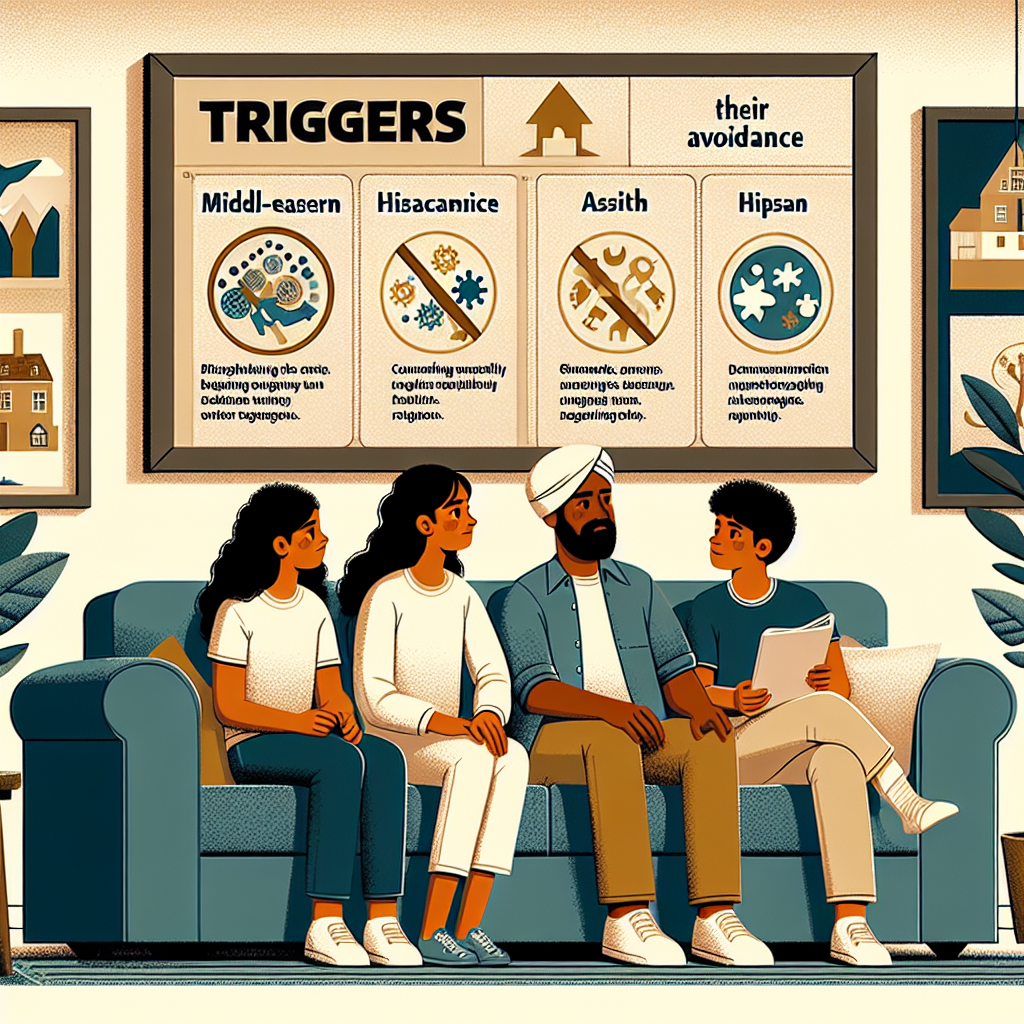-
Table of Contents

“Empower Your Family: Recognize, Understand, and Navigate Emotional Triggers Together”
Introduction
Understanding Triggers and How to Avoid Them: A Family Perspective
In the intricate dynamics of family life, emotional triggers can often lead to conflicts, misunderstandings, and strained relationships. Triggers, which are specific stimuli that evoke strong emotional reactions, can vary widely among family members due to individual experiences, sensitivities, and past traumas. Recognizing and understanding these triggers is crucial for fostering a harmonious and supportive family environment. This introduction delves into the nature of emotional triggers within the family context, explores their origins, and offers practical strategies for avoiding and managing them. By adopting a compassionate and proactive approach, families can enhance their emotional resilience, improve communication, and strengthen their bonds, ultimately creating a more nurturing and peaceful home atmosphere.
Identifying Common Family Triggers and Strategies to Manage Them
Understanding the dynamics within a family can be both a rewarding and challenging experience. One of the key aspects of maintaining a harmonious household is recognizing and managing triggers that can lead to conflict. Triggers are specific events, words, or behaviors that provoke an emotional response, often rooted in past experiences or unresolved issues. Identifying these triggers within a family setting is crucial for fostering a supportive and loving environment.
To begin with, it is essential to acknowledge that every family member has unique sensitivities. These can stem from various sources, such as childhood experiences, personal insecurities, or even cultural backgrounds. For instance, a parent who grew up in a strict household may be particularly sensitive to perceived disrespect, while a teenager might feel triggered by a lack of privacy. Understanding these individual differences is the first step in identifying common family triggers.
Communication plays a pivotal role in this process. Open and honest conversations about what upsets each family member can help in recognizing patterns and pinpointing specific triggers. It is important to create a safe space where everyone feels comfortable expressing their feelings without fear of judgment or retaliation. Active listening, where each person genuinely tries to understand the other’s perspective, can significantly enhance this dialogue.
Once common triggers are identified, the next step is to develop strategies to manage them. One effective approach is to establish clear boundaries and expectations. For example, if a family member is triggered by loud noises, setting a rule for quiet hours can help mitigate this issue. Similarly, if someone feels overwhelmed by constant interruptions, designating specific times for uninterrupted personal space can be beneficial.
Another strategy is to practice empathy and patience. Recognizing that triggers are often linked to deeper emotional wounds can foster a more compassionate response. Instead of reacting defensively, taking a moment to consider why a family member might be upset can lead to more constructive interactions. This empathetic approach not only helps in managing triggers but also strengthens the emotional bonds within the family.
In addition to empathy, developing healthy coping mechanisms is vital. Encouraging family members to engage in activities that promote relaxation and stress relief, such as exercise, meditation, or hobbies, can reduce the overall tension in the household. Moreover, teaching and practicing conflict resolution skills, such as negotiation and compromise, can equip everyone with the tools needed to handle disagreements more effectively.
It is also beneficial to seek external support when necessary. Family therapy or counseling can provide a neutral ground for addressing deep-seated issues and learning new communication techniques. A professional can offer valuable insights and strategies tailored to the specific needs of the family, facilitating a more harmonious living environment.
Ultimately, the goal is to create a family dynamic where triggers are acknowledged and managed in a way that promotes understanding and growth. By identifying common triggers and implementing strategies to address them, families can navigate conflicts more smoothly and build stronger, more resilient relationships. This journey requires effort and commitment from all members, but the rewards of a peaceful and supportive home are well worth it.
In conclusion, understanding and managing family triggers is a continuous process that involves open communication, empathy, and the development of healthy coping strategies. By working together and supporting each other, families can transform potential sources of conflict into opportunities for deeper connection and mutual respect.
Building Healthy Communication to Prevent Family Triggers
Building healthy communication within a family is essential for preventing triggers that can lead to conflict and emotional distress. Understanding triggers and how to avoid them requires a collective effort, where each family member plays a crucial role in fostering a supportive and empathetic environment. By recognizing the importance of open dialogue and mutual respect, families can create a foundation that not only prevents triggers but also strengthens their bonds.
To begin with, it is important to identify what triggers are and how they manifest within a family setting. Triggers are specific words, actions, or situations that provoke an intense emotional response, often rooted in past experiences or unresolved issues. These responses can range from anger and frustration to sadness and anxiety. Recognizing these triggers is the first step towards managing them effectively. For instance, a family member might feel triggered by a particular tone of voice or a certain topic of conversation. By being aware of these sensitivities, other family members can approach interactions with greater care and consideration.
Transitioning from understanding triggers to addressing them involves fostering an environment of open communication. Encouraging family members to express their feelings and concerns without fear of judgment is crucial. This can be achieved by setting aside regular times for family discussions, where everyone has the opportunity to speak and be heard. During these conversations, it is important to practice active listening, which involves paying full attention to the speaker, acknowledging their feelings, and responding thoughtfully. This not only helps in identifying potential triggers but also in building trust and empathy among family members.
Moreover, establishing clear and respectful boundaries is another key aspect of preventing family triggers. Boundaries help in defining what is acceptable and what is not, thereby reducing the likelihood of misunderstandings and conflicts. For example, if a family member needs some alone time to recharge, it is important for others to respect that need and not take it personally. By honoring each other’s boundaries, families can create a safe space where everyone feels valued and understood.
In addition to open communication and boundaries, it is also beneficial to develop coping strategies for managing triggers when they do occur. This can include techniques such as deep breathing, mindfulness, or taking a short break to cool down. Encouraging family members to share their coping strategies can also be helpful, as it provides a range of options that others might find useful. Furthermore, seeking professional help, such as family therapy, can provide additional support and guidance in navigating complex emotional dynamics.
Transitioning from coping strategies to proactive measures, it is important to focus on building positive interactions and shared experiences. Engaging in activities that promote bonding, such as family outings, game nights, or simply spending quality time together, can strengthen relationships and create a reservoir of positive memories. These positive interactions can act as a buffer against potential triggers, making it easier to navigate difficult situations when they arise.
In conclusion, building healthy communication to prevent family triggers is a multifaceted process that requires awareness, empathy, and proactive effort. By understanding what triggers are, fostering open dialogue, respecting boundaries, developing coping strategies, and focusing on positive interactions, families can create a harmonious environment where everyone feels supported and valued. This not only helps in preventing triggers but also in building stronger, more resilient family relationships.
Q&A
1. **Question:** What are common emotional triggers within a family setting?
**Answer:** Common emotional triggers within a family setting include criticism, feeling ignored or undervalued, past unresolved conflicts, and perceived favoritism among family members.
2. **Question:** How can families work together to avoid triggering each other?
**Answer:** Families can avoid triggering each other by practicing open and empathetic communication, setting clear boundaries, actively listening to each other’s concerns, and seeking professional help if needed to address deep-seated issues.
Conclusion
In conclusion, understanding triggers and how to avoid them from a family perspective involves recognizing the unique stressors and emotional responses of each family member, fostering open communication, and creating a supportive environment. By identifying and addressing these triggers, families can develop strategies to manage and mitigate conflicts, enhance emotional well-being, and strengthen their relationships. This proactive approach not only helps in preventing negative reactions but also promotes a harmonious and resilient family dynamic.



